Cell Ranger6.1, printed on 04/08/2025
The web_summary.html file is the starting point for quality control on any combination of 5' Chromium Single Cell Immune Profiling FASTQs that were run through cellranger multi. Refer to the multi pipeline page to learn about running cellranger multi.
| Cell Ranger 6 includes significant structural changes to the web_summary.html file output from the cellranger multi pipeline in order to improve the user experience when analyzing joint GEX + VDJ data. This Web Summary Transition Guide will help you transition to the Cell Ranger 6 multi web summary and quickly examine your experimental data. |
Below, we walk you through the web_summary.html from an example public dataset consisting of 1K Human B cells.
There are three views on the left sidebar menu:
The Web Summary page is interactive. Users can zoom in on specific regions of certain graphs, choose a different clustering type for t-SNE projections, download images, or adjust the number of rows displayed for tables. Clicking the question mark "?" symbol next to graphs and metrics provides detailed descriptions.
The Sample view shows metrics based on detected cells:

Within Sample view, there are two tabs, Gene Expression and VDJ-B. More tabs may be present if additional features were sequenced, with one tab per feature type.
The Gene Expression tab contains key metadata, such as the reagent chemistry, transcriptome version, and reference path:
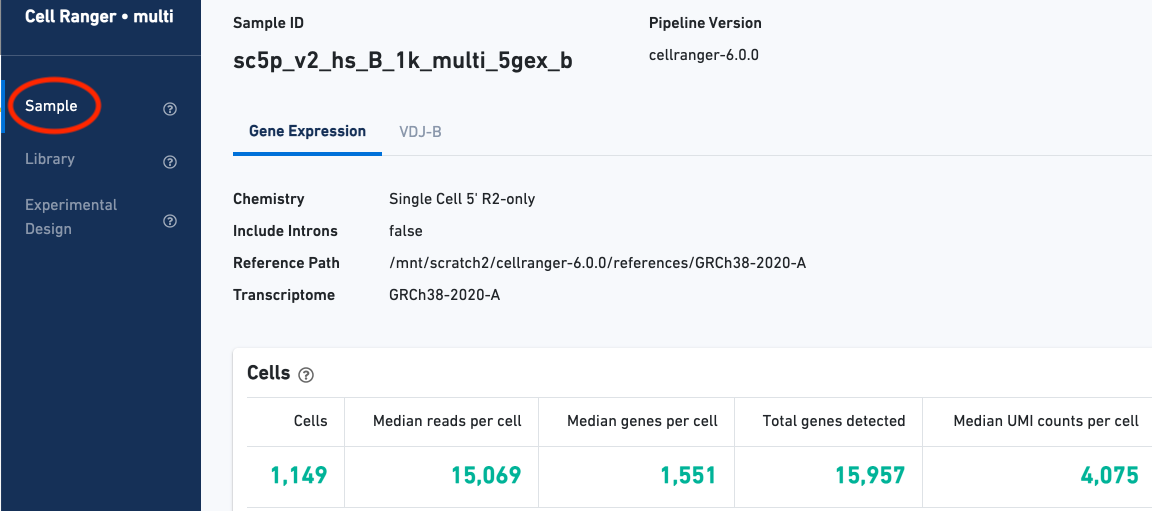
The Cells section contains the most important metrics for the sample. The Mapping Metrics section contains metrics regarding how reads mapped to the reference:
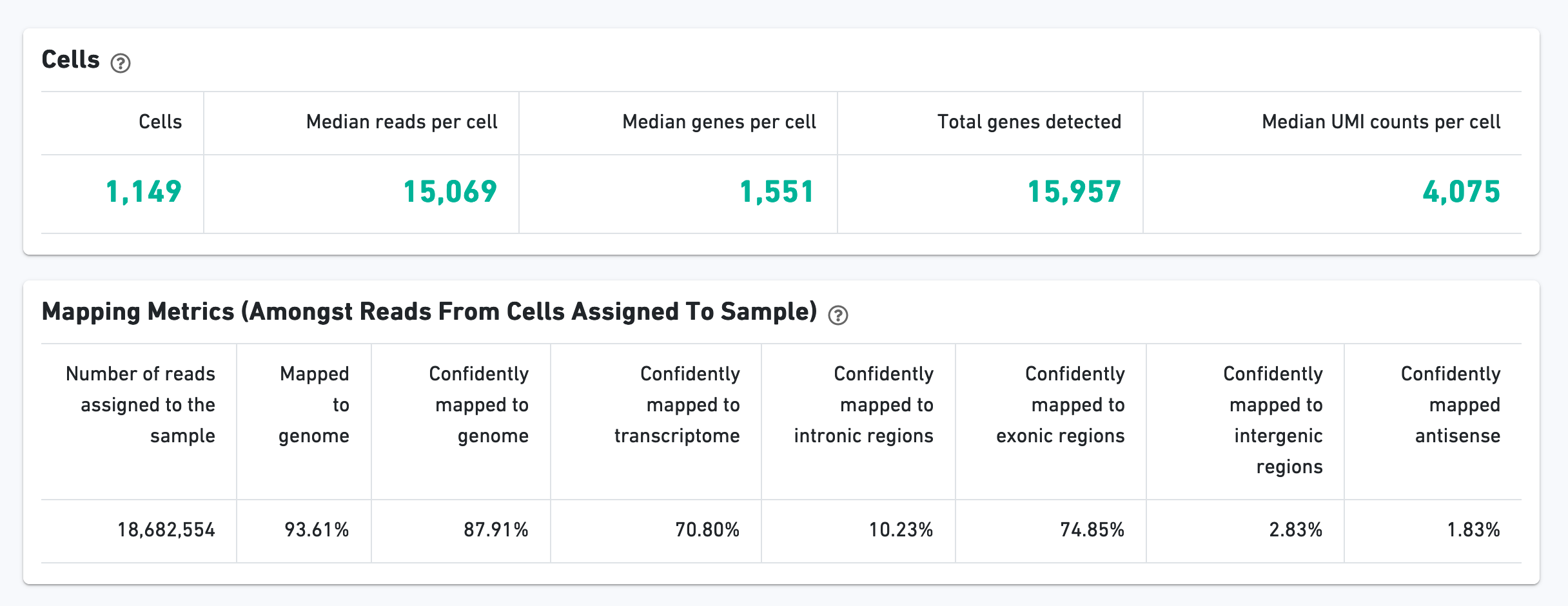
The t-SNE section shows the data reduced to two dimensions, colored by UMI count or clustering (graph-based by default). It is a good starting point to explore structure in the data.

The Top Features by Cluster section shows the results of a differential gene expression analysis among clusters:

The Sequencing Saturation section enables one to gauge whether it is worth sequencing deeper, with diminishing returns of UMIs recovered.

The VDJ tab has metadata and metrics for the V(D)J libraries:
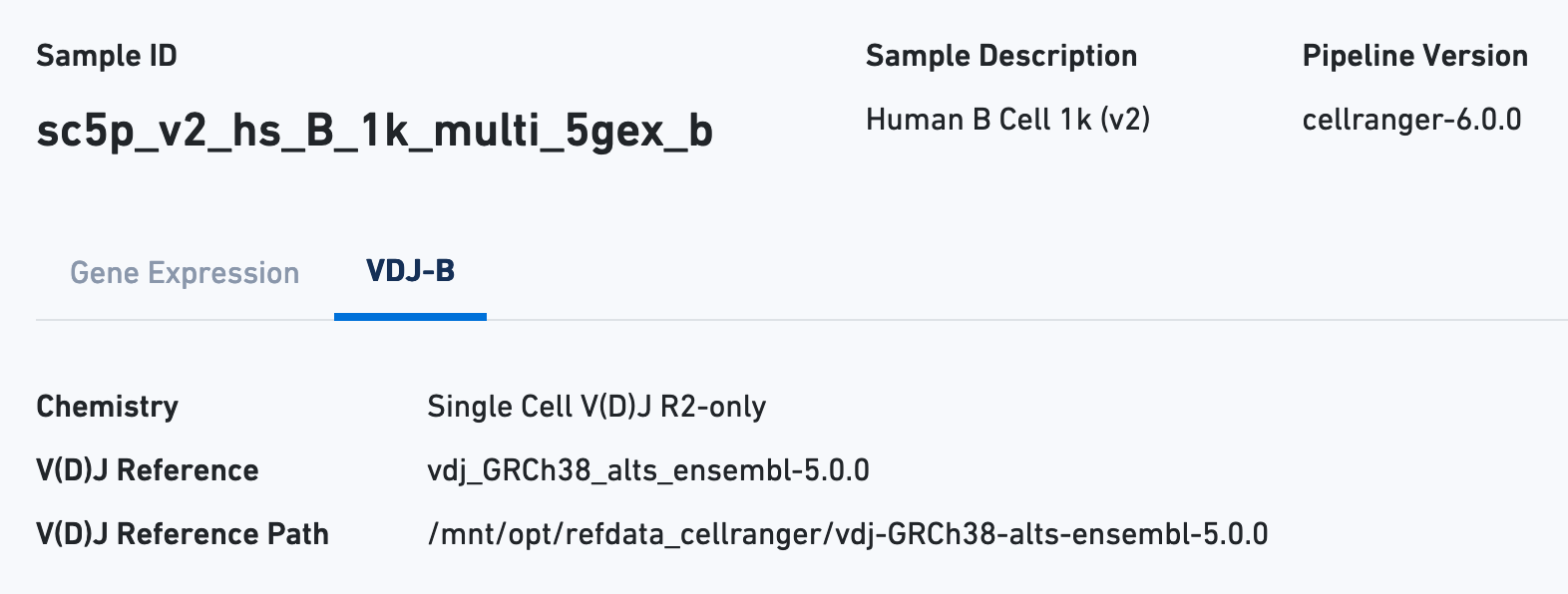
The B Cell Expression section contains metrics regarding B cell expression, and the V(D)J Annotation section contains metrics regarding V(D)J annotations.
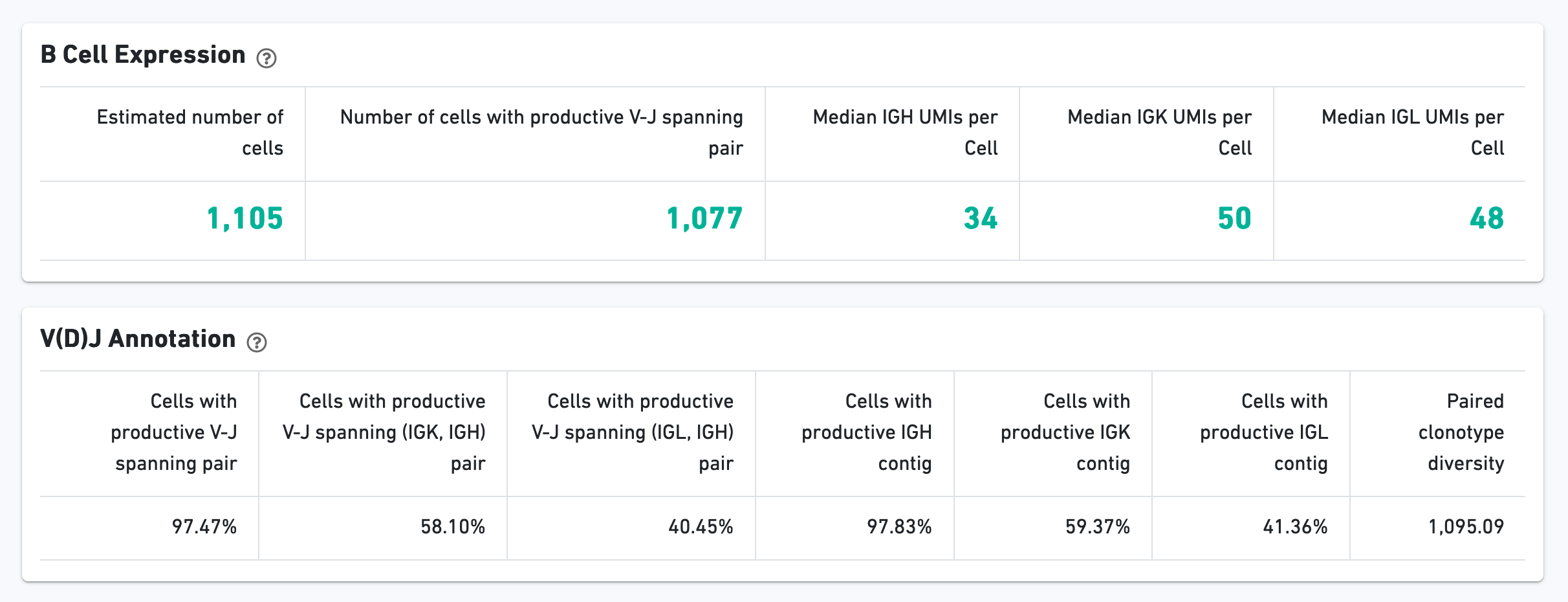
The Top 10 Clonotypes section contains a histogram for the top 10 clonotypes, and a list of their CDR3 sequences, frequencies, and proportions:
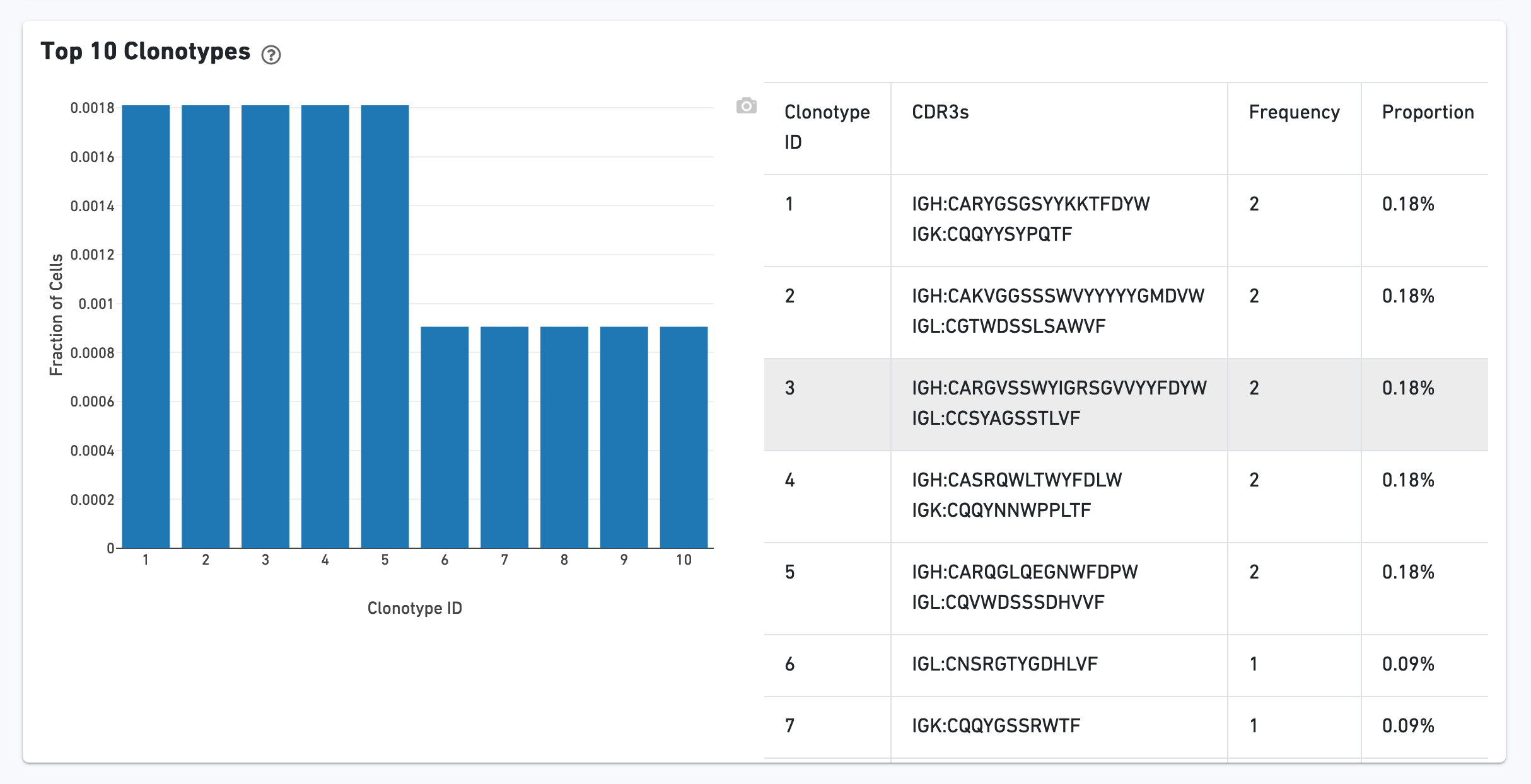
The library view contains metrics for the full library (cells and background), although the estimated number of cells is also reported here. For this dataset, the library view has two tabs: Gene Expression and VDJ-B. More tabs may be present if additional features were sequenced, with one tab per feature type.
By default, the Gene Expression tab is selected to view metrics calculated for the physical library. As with the Sample view, metadata for the physical library is displayed on top.
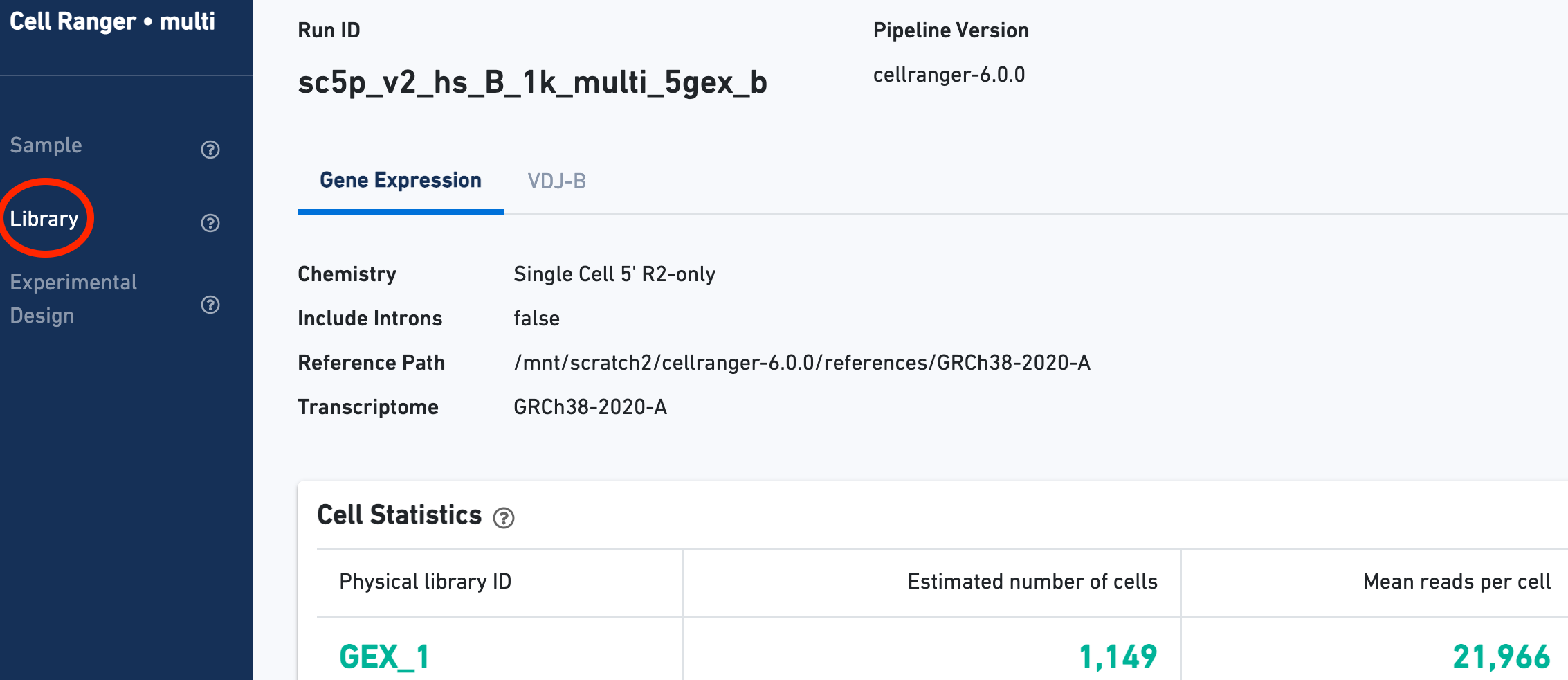
These green metrics display the most important results of the experiment:

Additional metrics are displayed below the Cell Statistics table. Click the question mark "?" to read full descriptions for each one.
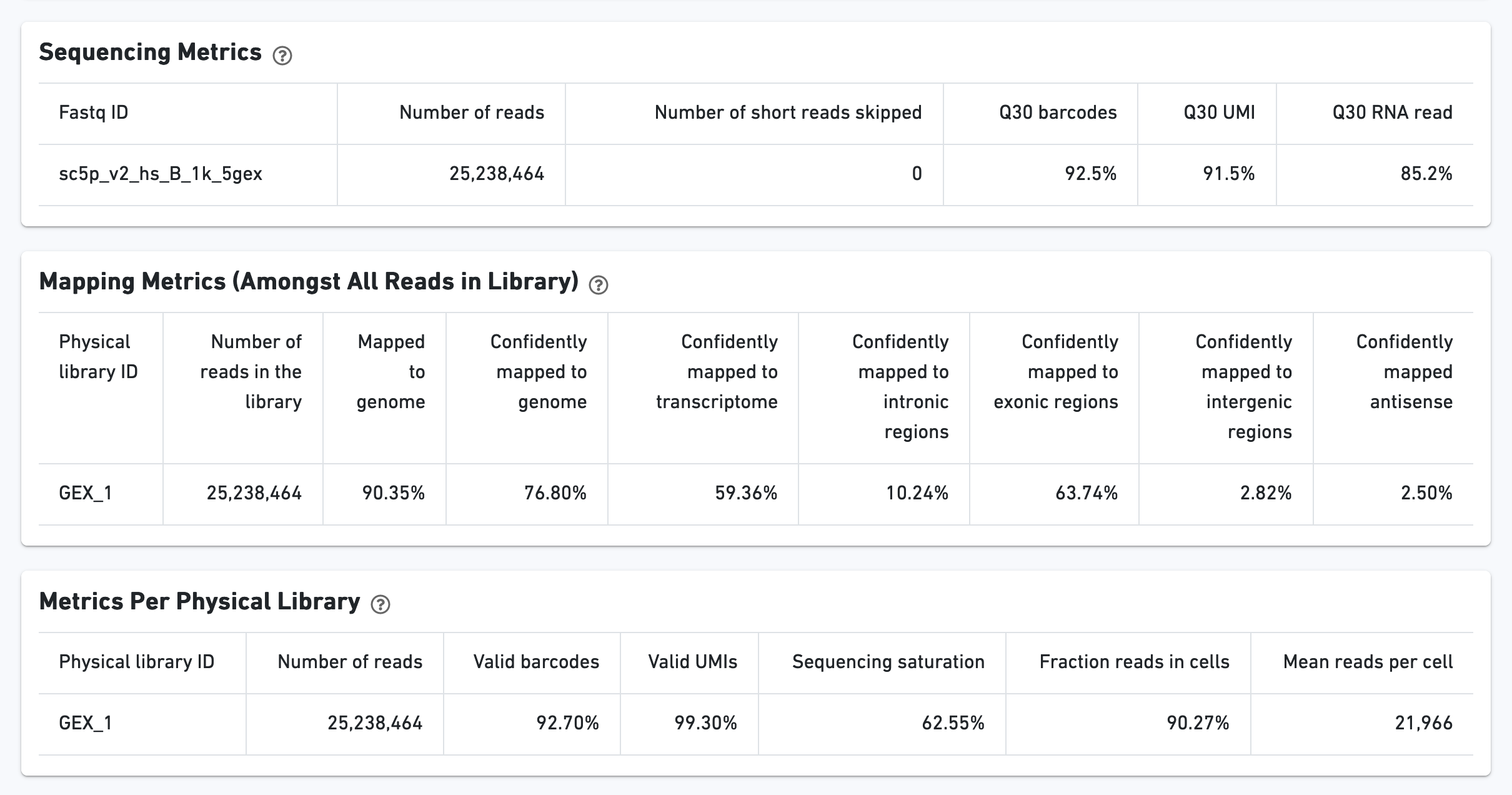
The Barcode Rank Plot for the gene expression data enables one to assess sample quality. Ideally there is a steep dropoff separating high UMI count cells from low UMI count background noise:

The sequencing saturation plot allows the user to assess the relative tradeoffs of sequencing deeper or shallower. As sequencing saturation increases, the total number of molecules detected in the library increases, but with diminishing returns as saturation is approached.
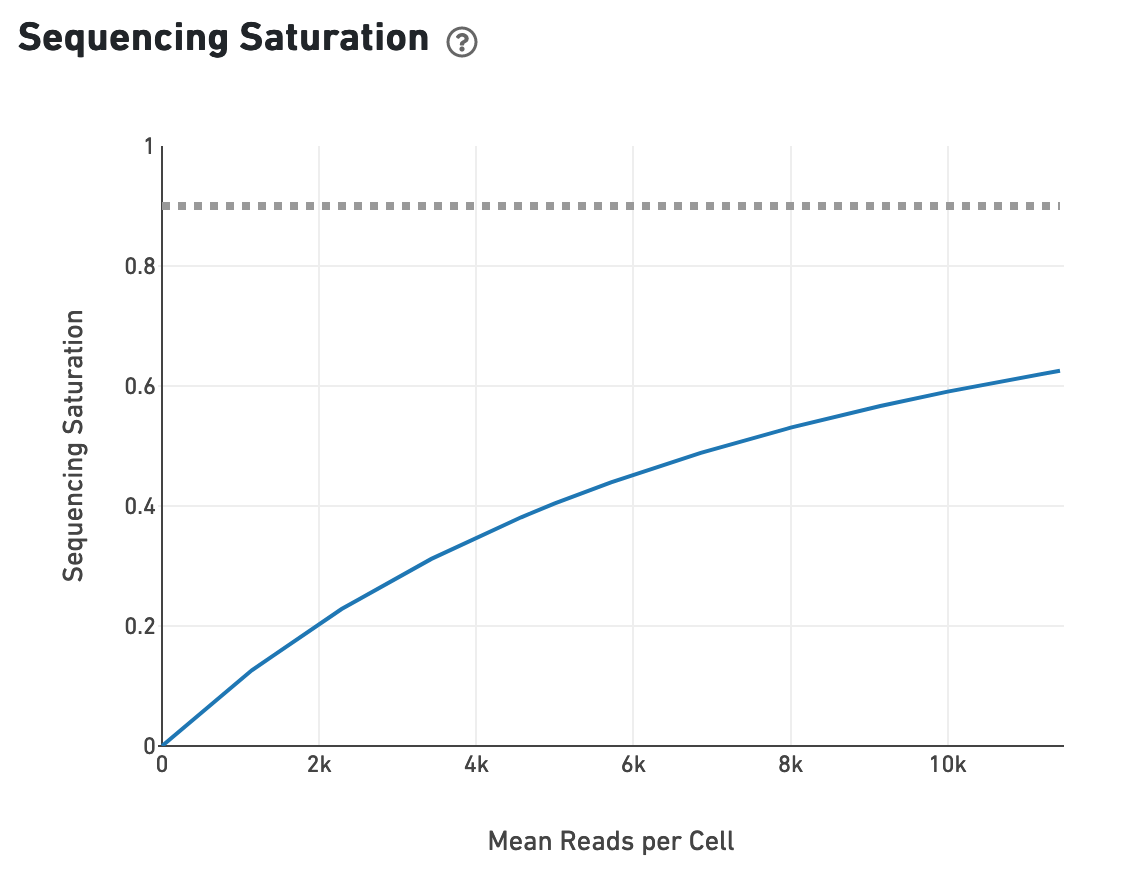
Likewise, one can assess the median genes per cell graph:

This tab provides cell statistics, including estimated number of cells and mean reads per cell for the V(D)J library:

However, all other metrics described in this tab are for the full library (cells + background), not just cell-associated barcodes.
The Enrichment section contains information about the V(D)J enrichment success based on the fraction of reads that partially or wholly map to any germline V(D)J gene segment, heavy chain segment (IGH), or light chain segments (IGK, IGL).
:

The Sequencing Metrics section describes many sequencing metics, including:

The Metrics Per Physical Library section shows the total number of reads sequenced from the V(D)J library (cells + background), valid barcodes after correction, mean reads per cell, mean number of read pairs used in assembly per cell-associated barcode, and fraction reads in cells.
The V(D)J Barcode Rank Plot shows performance of the cell calling algorithm.
Experimental Design view shows the experimental design for the dataset:

The multi config CSV file is also included for troubleshooting convenience:

Visit the Summary Metrics page to understand the metrics_summary.csv output file. If you have any questions or feedback, please contact support@10xgenomics.com.